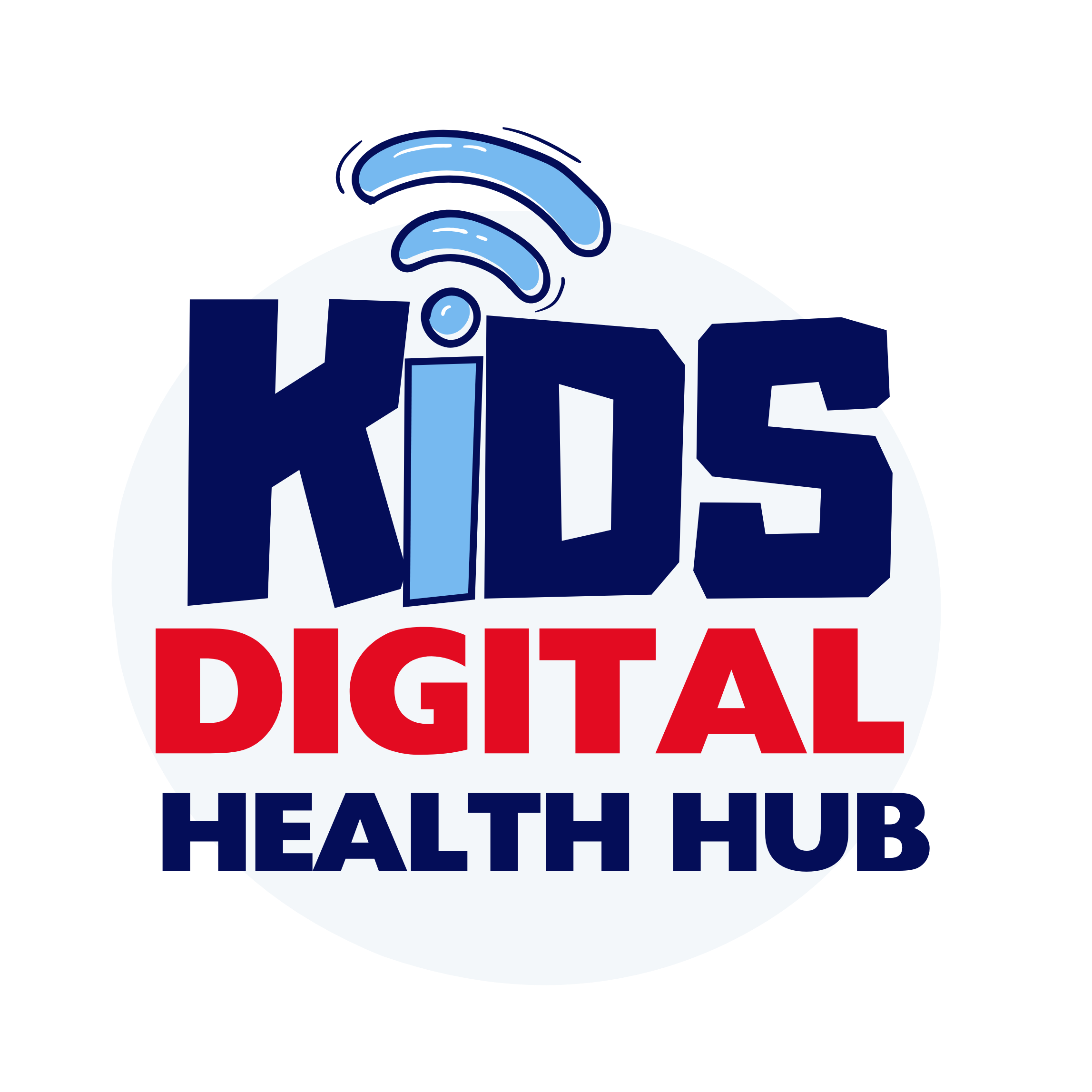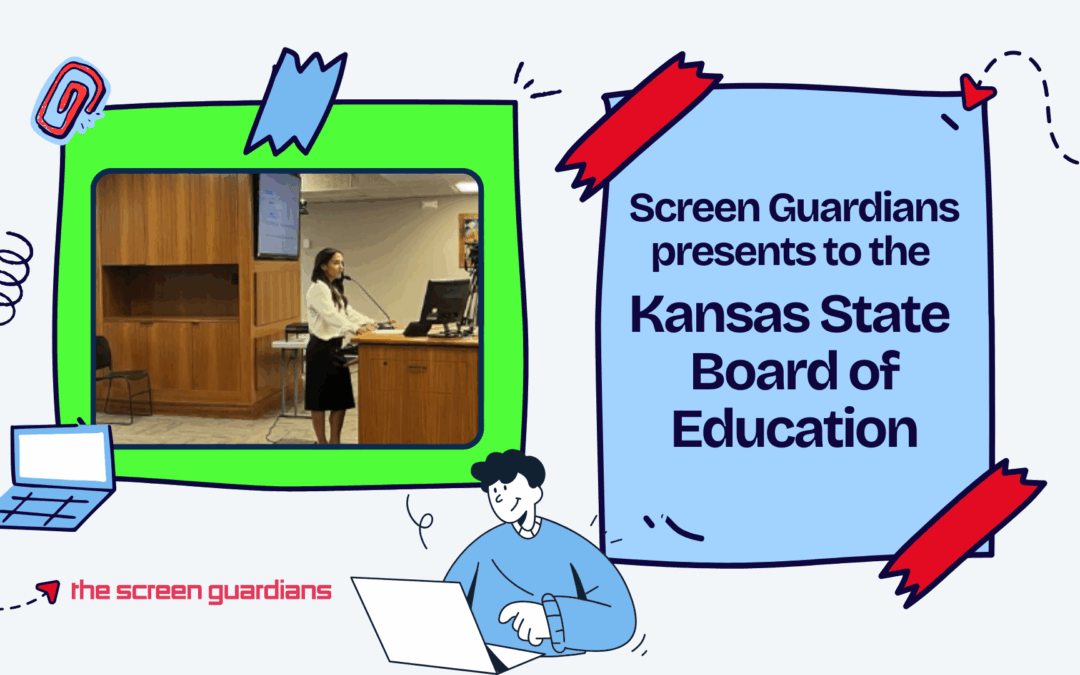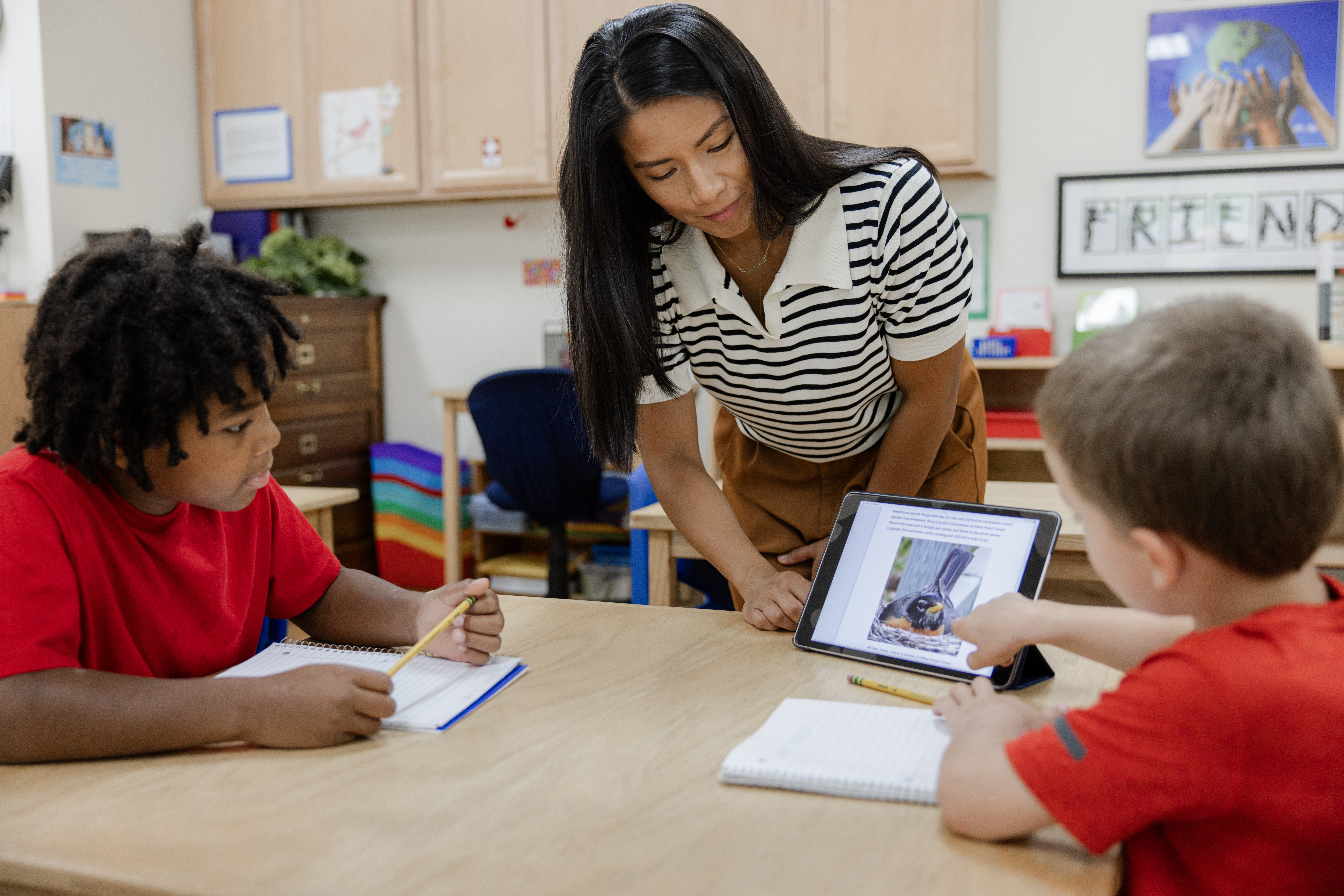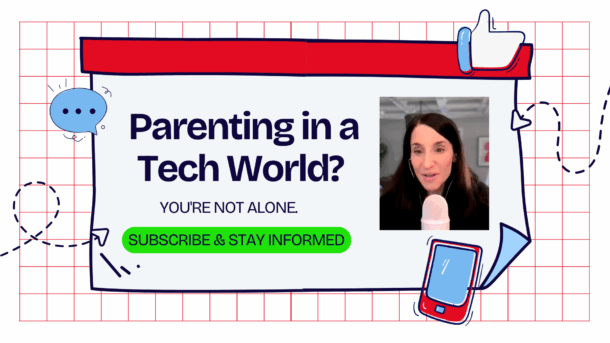Protecting digital health & safety for Kansas students and beyond.
In September 2025, Screen Guardians had the honor of delivering a special presentation to the Kansas State Board of Education.
This was not an ordinary appearance — it was the result of months of advocacy, collaboration with state representatives and education leaders, and direct outreach to Kansas school board members.
Our concern for the urgent issues surrounding children’s digital health and safety prompted the Board to invite us to speak.
Our mission was clear: to shine a light on the growing risks of unchecked screen use in schools, and to share why Kansas students deserve stronger protections.
Table of Contents
What is the purpose of Kansas State Board of Education?
The Kansas State Board of Education plays a central role in shaping the vision, goals, and accountability for K–12 education across the state. While its work encompasses a wide range of responsibilities, its core mission and purpose can be summarized as:
“To prepare Kansas students for lifelong success through rigorous, quality academic instruction, career training, and character development, according to each student’s gifts and talents.“
(Source: Kansas State Board of Education – Board Goals and Outcomes)
Key Responsibilities Include:
- Setting academic standards and measuring outcomes across districts
- Approving instructional guidelines, assessments, and accreditation
- Promoting social-emotional and character development alongside academic growth
- Monitoring student success metrics, including:
- Kindergarten readiness
- High school graduation rates
- College or career readiness
- Social-emotional growth
Vision: “Kansans Can”
The Board adopted a bold, student-centered vision in 2015:
“Kansas leads the world in the success of each student.“
This vision prioritizes not only academic achievement, but also employability skills, civic engagement, and personalized learning — acknowledging that each child’s path is unique.
Inside Our Presentation to the Kansas State Board: The Truth About Screen Time in Schools
Over the past decade, schools across the nation have moved toward 1:1 device programs. Today, 95% of students have their own device through their school.
According to national data collected by NCES, most U.S. public schools now operate 1:1 device programs, with over 9 in 10 students receiving a school-issued device—a number that continues to grow. (source)
While this creates tremendous learning opportunities, it also exposes children to serious risks:
- Distraction & learning loss: Devices increase off-task behavior and reduce attention spans. They’ve been linked to lower test scores, weaker reading comprehension, diminished critical thinking, and memory issues.
- Physical health concerns: Excessive screen use disrupts sleep, strains eyes, and worsens posture and musculoskeletal development.
- Mental & emotional strain: High screen time is associated with heightened anxiety, depression, and emotional dysregulation in children and teens.
- Safety & privacy threats: With more devices comes more exposure — to unfiltered content, EdTech data collection, pornography, cyberbullying, sextortion, grooming, and even trafficking.
The data is clear
The risks aren’t hypothetical.
They’re happening — and they’re escalating.
According to the National Center for Missing & Exploited Children (NCMEC):
- Reports of online enticement jumped from 292,951 in the first half of 2024 to 518,720 in the first half of 2025.
- Reports involving generative AI exploitation surged from just 6,835 to an alarming 440,419 in the same timeframe.
These are staggering numbers.
They confirm what educators and parents are already seeing — an exponential rise in online crimes against children. And 2025 marks the sharpest rise yet.
A wake-up call for schools
Unregulated device use isn’t just harming learning.
It’s threatening students’ health, mental well-being, and most importantly, their safety.
As we shared with the Kansas State Board of Education:
This is not just an education issue.
It’s a public safety, public health, and child protection issue.
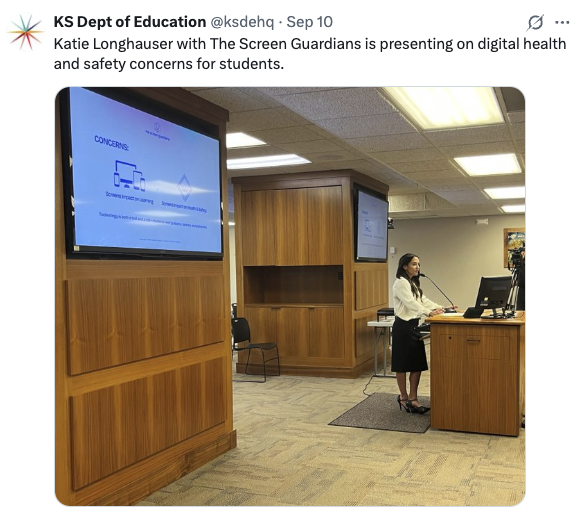
Our role: education first, solutions second
Our goal in this presentation was not to blame or criticize schools. It was to educate the Kansas State Board of Education on a widening and urgent threat.
We shared:
- The neuroscience and research behind screen-related harm
- The disturbing statistical rise in online exploitation
- Real-world classroom stories and experiences
And we introduced a path forward — starting with the Screen Guardians Program. That includes:
- Digital health education for students, parents, and teachers
- EdTech accountability and privacy protections
- Crisis response & recovery tools
- Device and content management solutions that go beyond filters
- Training for educators and families to recognize early warning signs and know how to respond
Because protecting kids doesn’t begin with tech—it begins with awareness and readiness.
Moving forward: digital safety in schools
This invitation from the Kansas State Board of Education is an important milestone.
It signals that digital health and safety are finally being acknowledged at the highest level of Kansas education policymaking.
But it’s just the beginning.
Screen Guardians will continue working with leaders, districts, and families to ensure students are protected, balanced, and supported in this digital world they’re growing up in.
And next?
We’ll be presenting to superintendents and school administrators across the state ahead of our official program launch this January.
Let’s keep the conversation going, Kansas.
Let’s build safer, healthier, more human-centered digital environments — together.
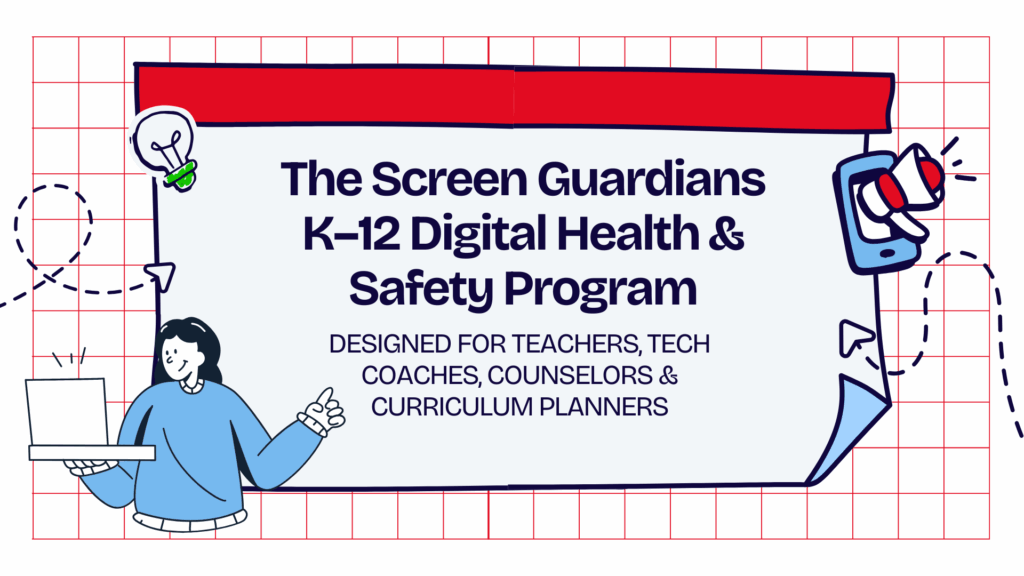
For more about the Screen Guardians Program, visit thescreenguardians.com or contact Katie Longhauser.
